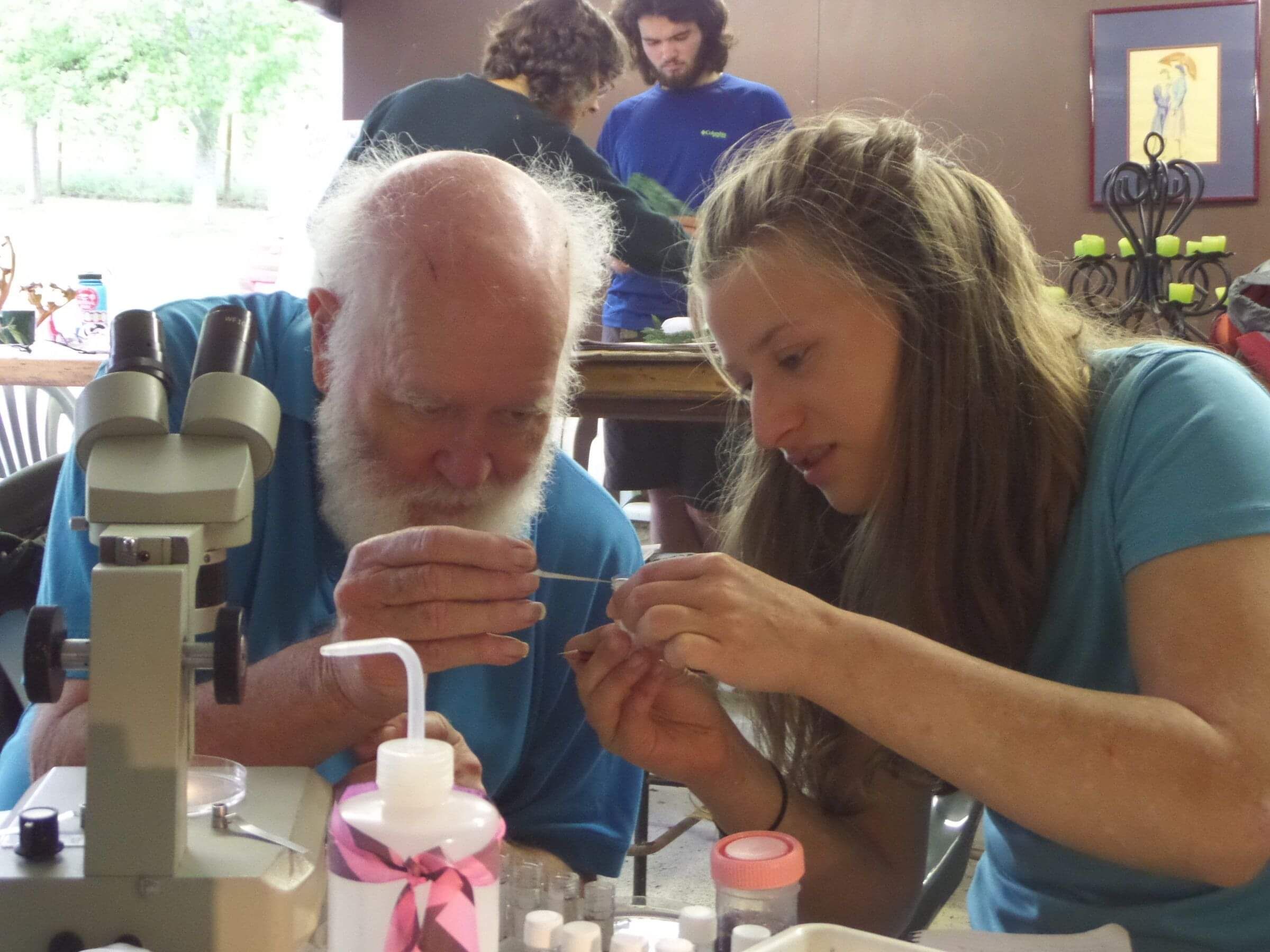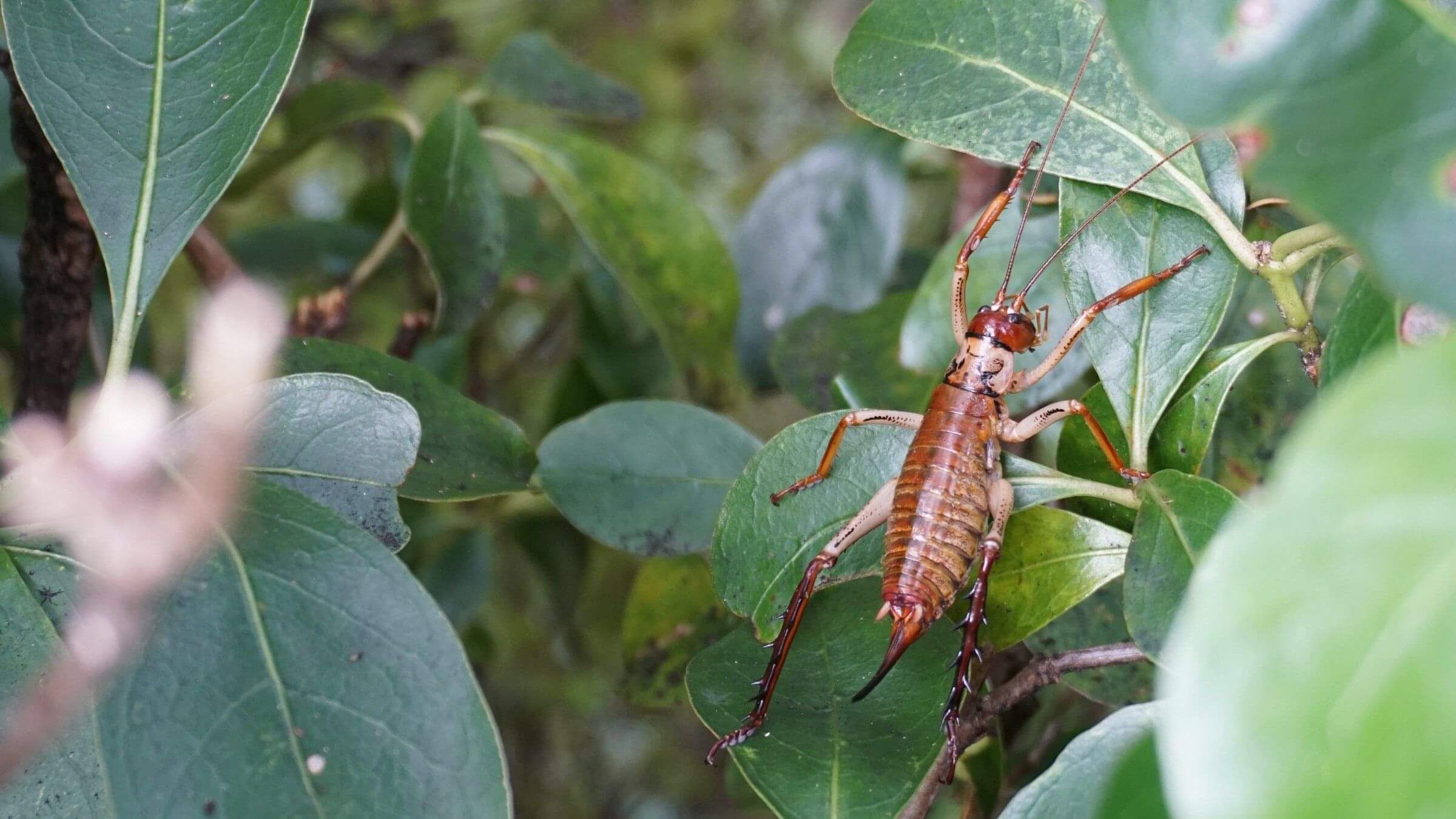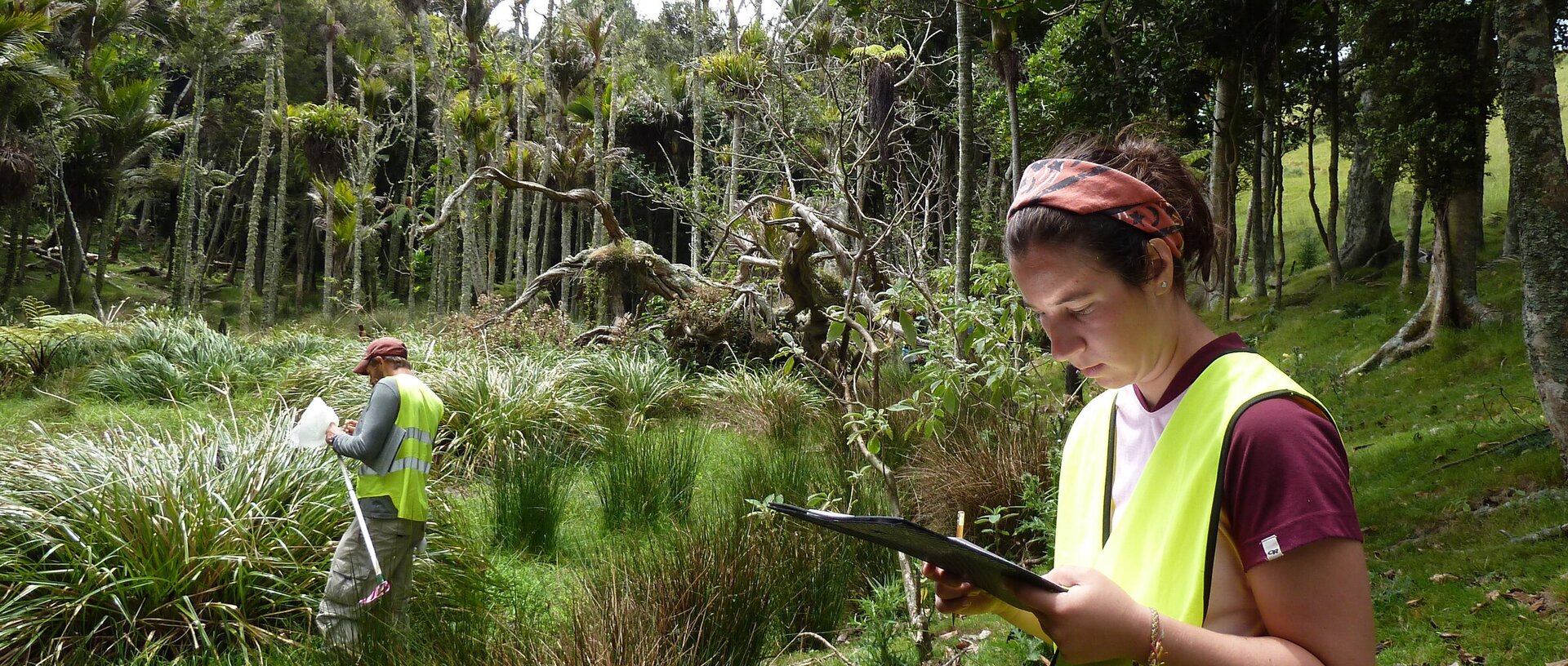Our Services
Our skilled team of highly qualified ecologists work in a variety of ecosystems with years of experience in:
- Baseline monitoring
- Longitudinal ecological monitoring
- Biodiversity assessments
- Surveys (vegetation, wildlife - including invertebrates!)
- Monitoring (water quality, restoration, covenants)
- Project management
- Report writing
- Research design
Terrestrial
Population dynamics of Hochstetter’s Frog
New Zealand is home to an ancient group of frogs with a unique evolutionary lineage, the Leiopelmatidae. Three species of these frogs have gone extinct since the arrival of humans, and of the four extant species only two are present on the mainland. Hochstetter’s Frog (Leiopelma hochstetteri) is the most widespread of the remaining species, but its habitat requirements and low reproductive rate make it vulnerable to ongoing pressures from human activities and introduced mammals. EcoQuest discovered a population of Hochstetter’s Frog at Sanctuary Mountain Maungatautari in the southern Waikato in 2004 (Ref 1), leading to an ongoing research project to monitor populations of this frog at Maungatautari, and in the Waitākere and Hūnua Ranges of the Auckland region.
Since frogs were initially discovered at Maungatautari, the entire mountain has been enclosed in a predator-proof fence and most mammalian predators eradicated. Surveyed frog numbers increased spectacularly after the pest eradication, with numbers quadrupling along the same survey transects across a three year period (Ref 2). Subsequent frog surveys on Maungatautari have been expanded into new areas as we attempt to quantify the spread and population dynamics of this population. Our surveys in the Waitākere and Hūnua Ranges have also highlighted the importance of long-term management of introduced mammalian predators in protecting remnant populations of native frogs.
Ref 1: M Baber, H Moulton, C Smuts-Kennedy, N Gemmell, and M Crossland, 2006: Discovery and spatial assessment of a Hochstetters’s frog (Leiopelma hochstetteri) population in Maungatautari Scenic Reserve, New Zealand. New Zealand Journal of Zoology 33: 1–10.
Ref 2: C G Longson, R Brejaart, M J Baber, and K J Babbitt, 2017: Rapid recovery of a population of the cryptic and evolutionarily distinct Hochstetter's Frog, Leiopelma hochstetteri , in a pest-free environment. Ecological Management & Restoration 18(1):26-31
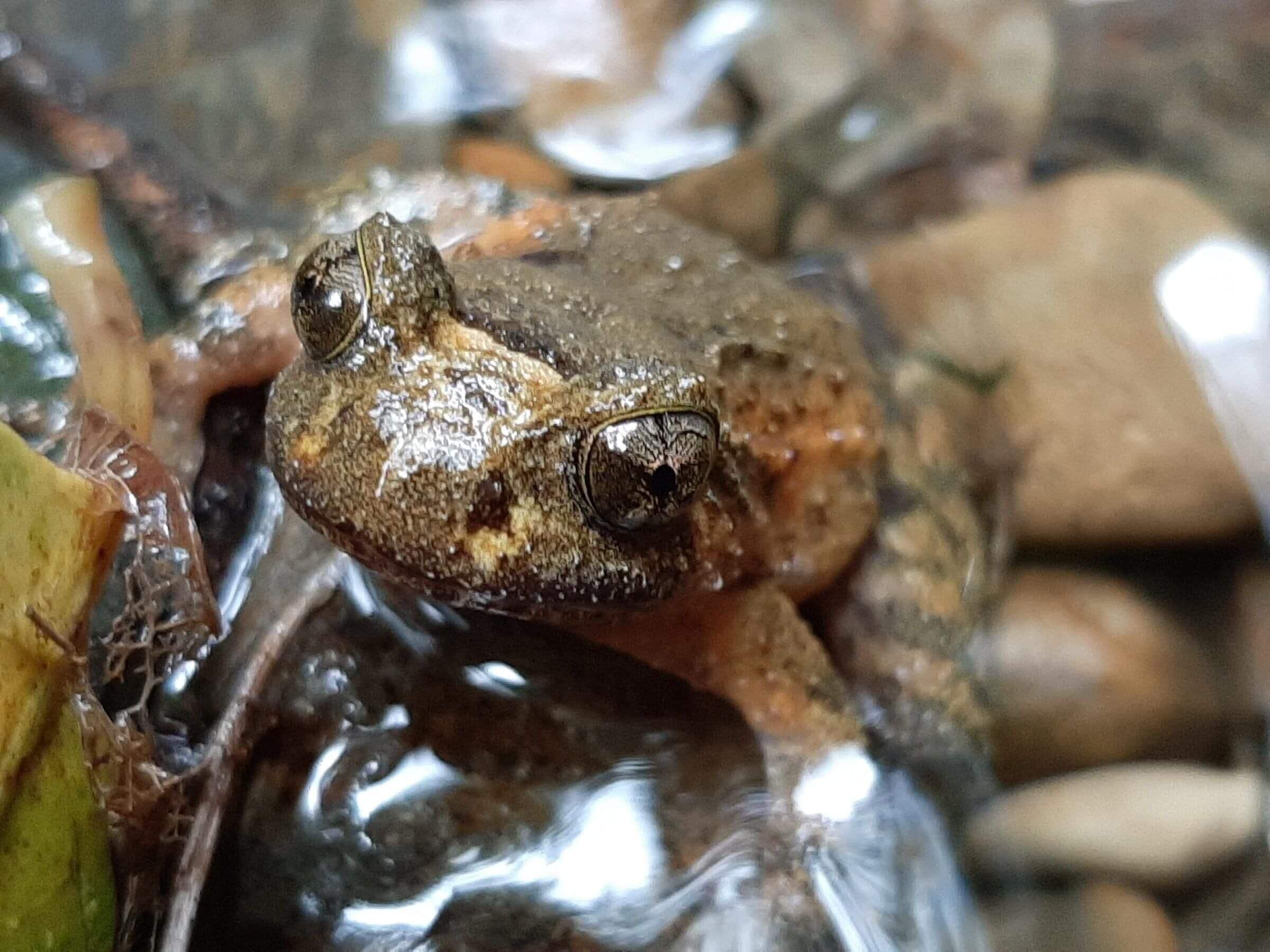
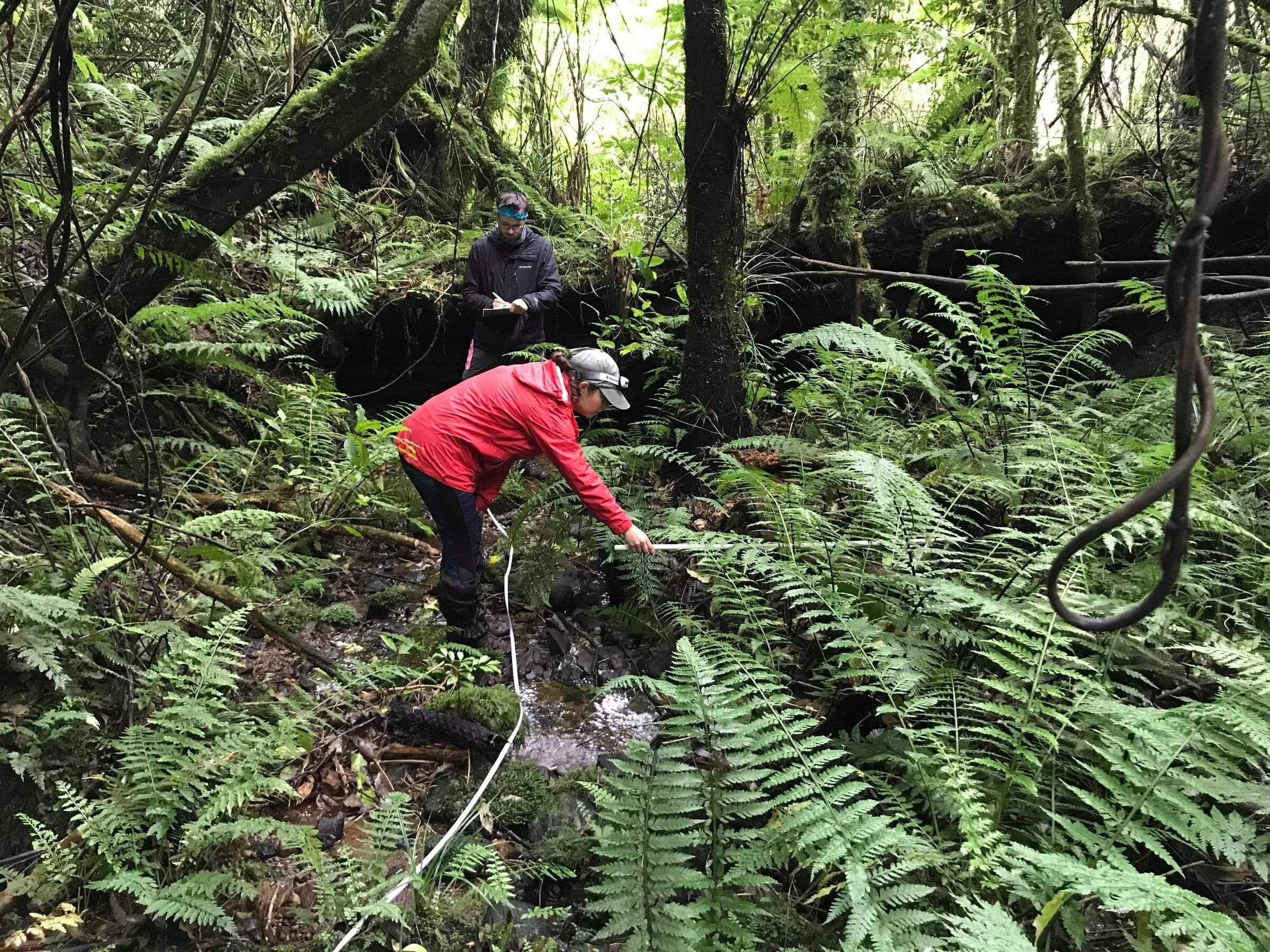
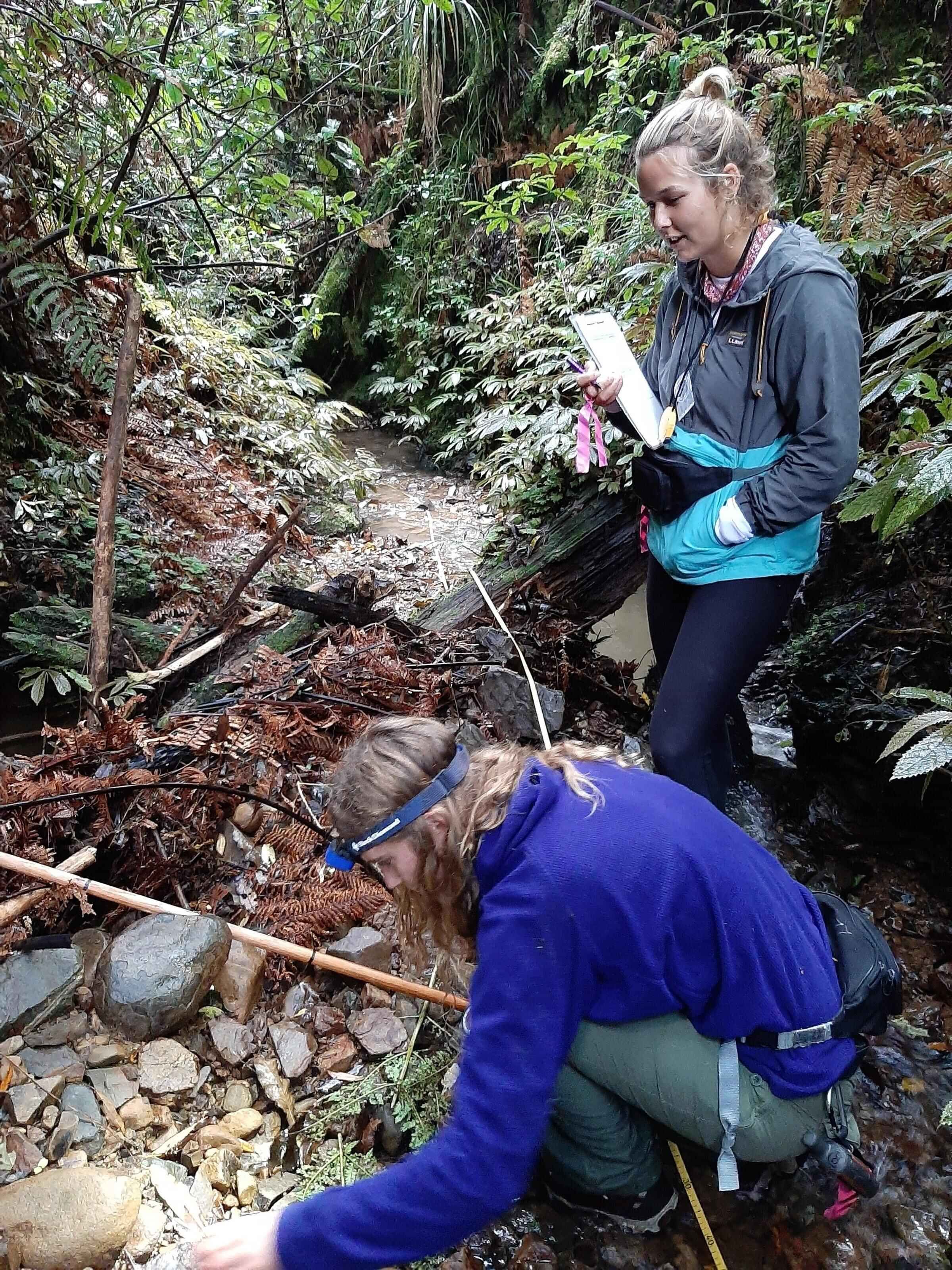

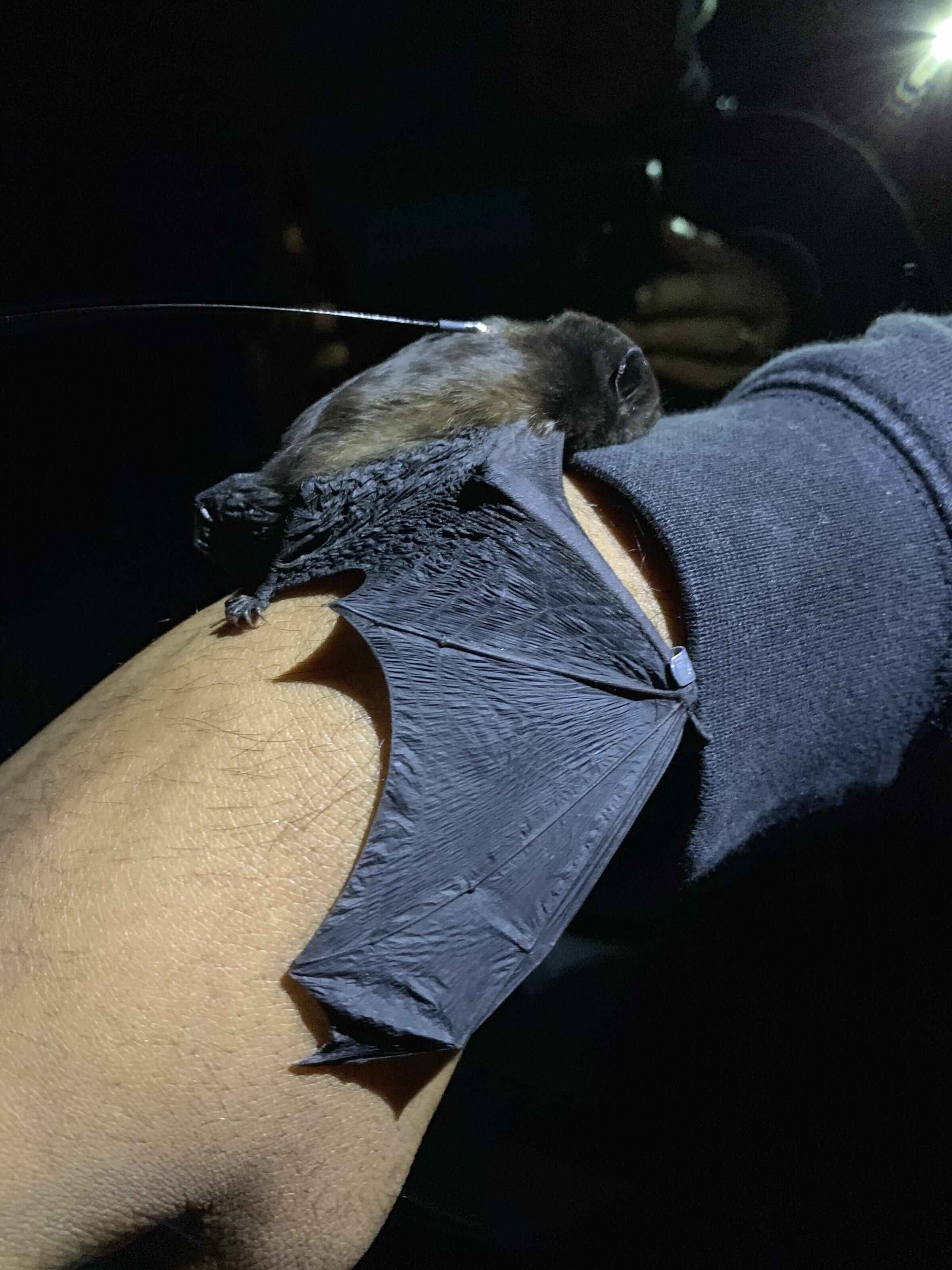
Acoustic monitoring of long-tailed bats and locating roosts in the Hūnua Ranges Regional Park, Auckland.
New Zealand’s native bats are cryptic and elusive creatures. Unfortunately, they have suffered major population declines in recent decades due to habitat loss and the widespread presence of invasive mammalian predators. A population of long-tailed bats (Chalinolobus tuberculatus) live in the Hūnua Ranges Regional Park located close to EcoQuest and since 2017 we have been monitoring the presence and activity of these bats using acoustic equipment. This important monitoring work has also led to the establishment of an annual bat tracking program. Through this research, bats are captured using specialized harp traps. They are subsequently fitted with identification bands and specimens of a sufficient weight are fitted with radio-transmitters. Using radio-telemetry equipment, this enables us to track the bats to their roost sites, the location of which changes on an almost nightly basis. Understanding bat activity and locating roosts will be crucial for estimating the population size of these native mammals in the region, with a view to improving their level of protection through targeted management strategies.
The response of giant carnivorous kauri snail populations to forest restoration projects at Waipoua, Northland.
Of New Zealand’s diverse endemic land snail fauna, the largest species is the kauri snail, pūpūrangi, (Paryphanta busbyi). The kauri snail, once widespread across Northland, is now restricted to the remaining forest fragments which provide fertile soil and an abundance of earthworms required by the snails. The Waipoua Forest Trust in Northland is kaitiaki for a forest block in part regenerating forest, and in part older-growth forest. Since 2017 EcoQuest has conducted kauri snail abundance surveys to get a better understanding of their numbers and distribution and to document their response to forest maturation. EcoQuest counts the number of snails observed at night along permanent transects. These snail counts allow us to compare snail activity between the older growth and more recently planted forests so that we can document seasonal differences and recognise changes in abundance over time. We measure and mark all snails, to include recapture data of this long-lived species.

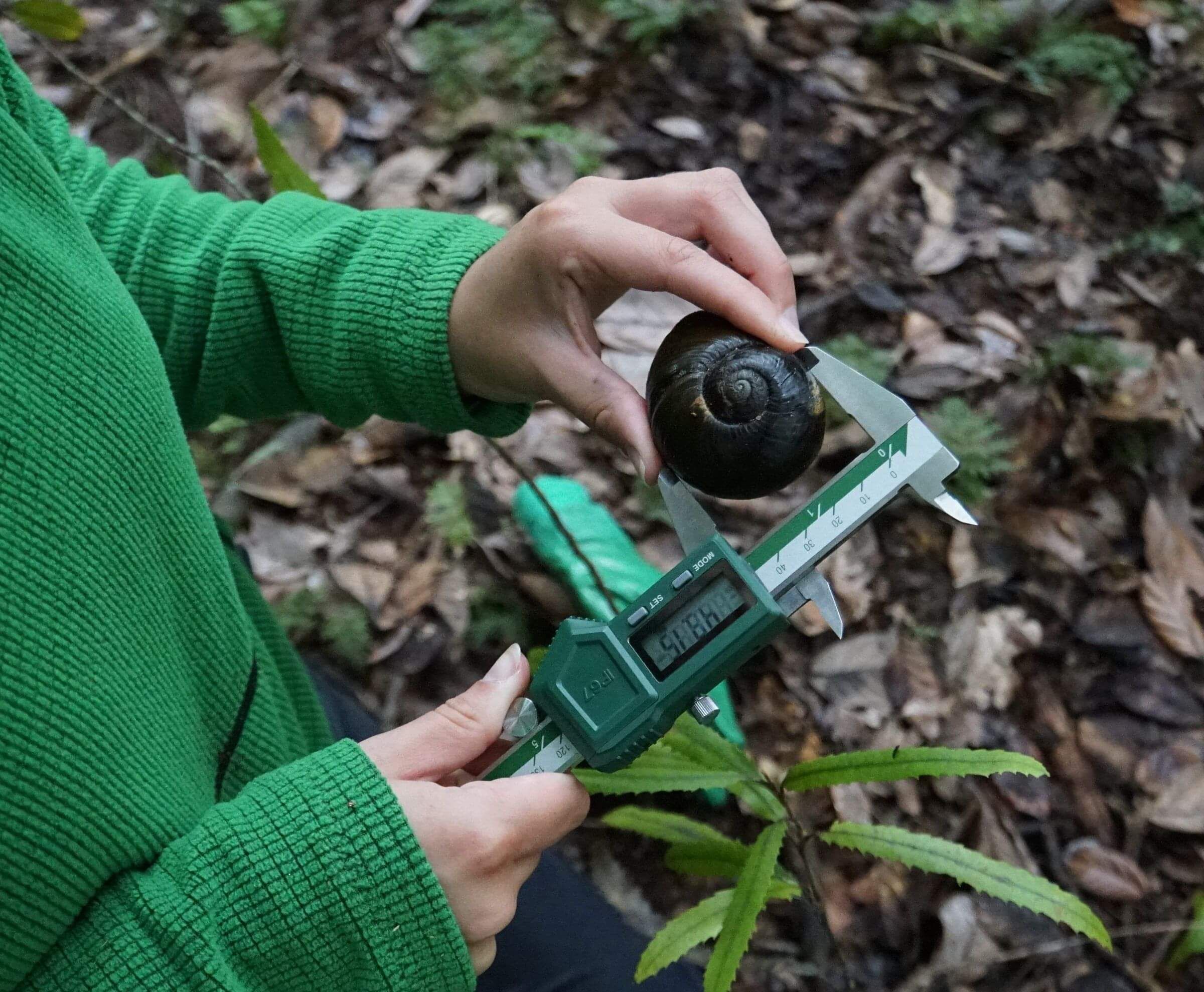
Fresh Water
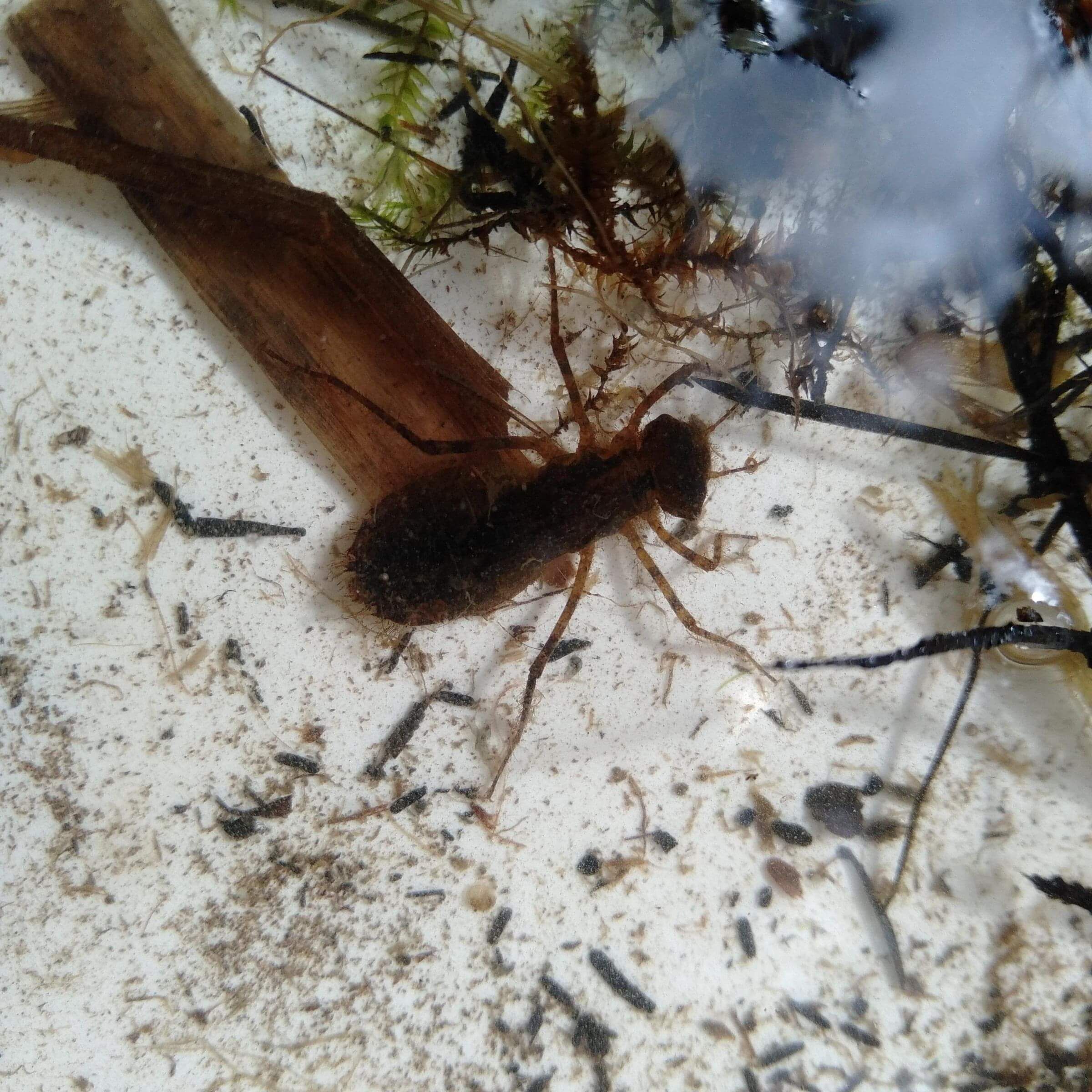

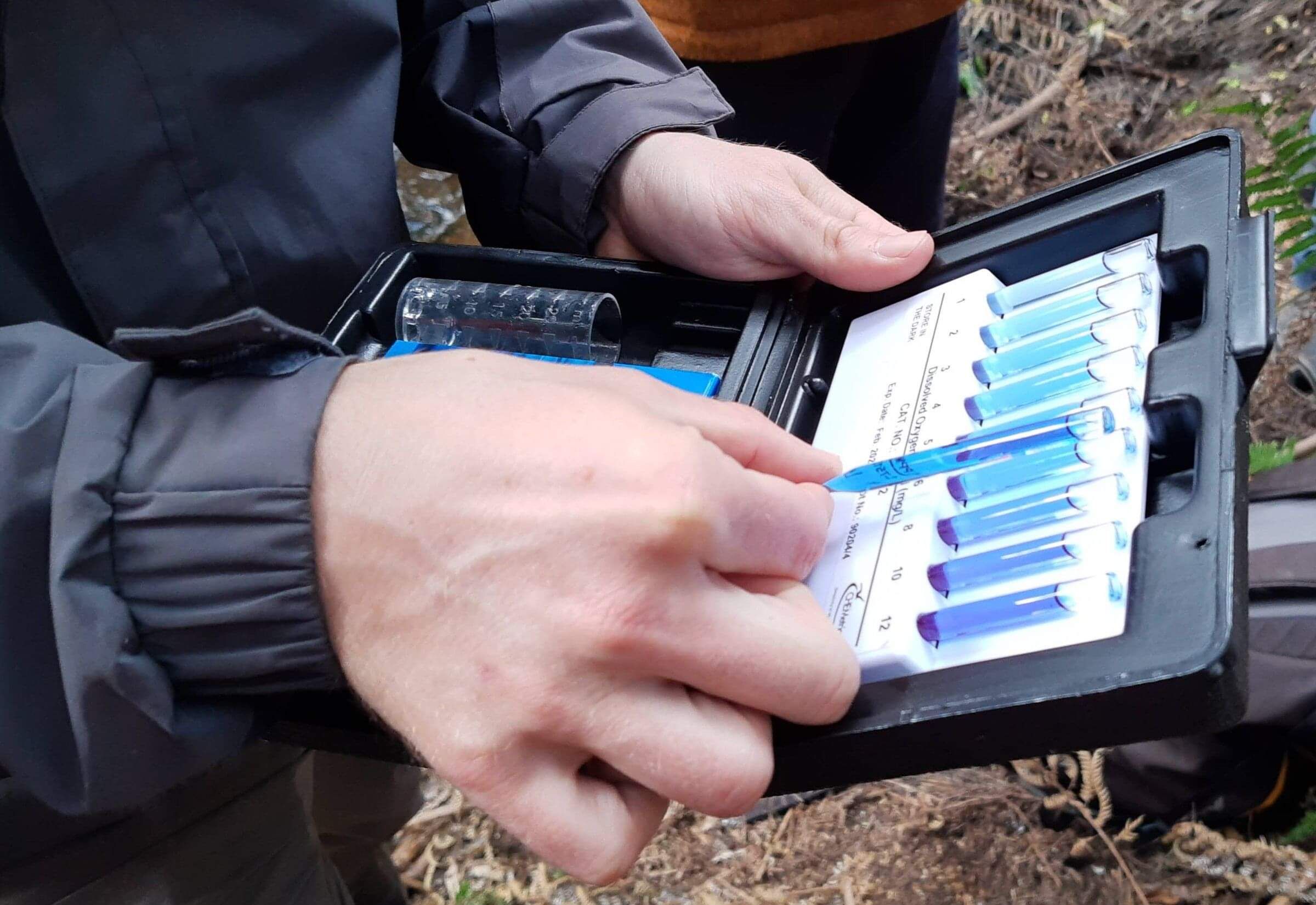
Water Quality Monitoring to Assess Stream Health
EcoQuest has the expertise and resources to conduct stream monitoring for restoration projects. New Zealand is increasing efforts to restore waterways. Mitigation efforts include riparian planting, stock exclusion, and reducing fertiliser use. Many local groups are documenting the benefits their mitigation practices have on stream health. EcoQuest is able to monitor stream health using a variety of methods including: Physical (clarity, velocity), Chemical (dissolved oxygen, nitrate/nitrite, phosphate) and Biological (Macro-invertebrate (MCI), Colilert concentration and E. coli concentrations). EcoQuest processes bacteria onsite using the Colilert-18 Quanti-Tray system.
Since 2019 EcoQuest has monitored streams in the Western Firth Catchment. Committed landowners of the Pūkorokoro-Miranda area have formed the Western Firth Catchment Group Trust. Their aim is to improve the health of the waterways through riparian planting. The Western Firth Catchment is a part of the Forest to Firth conservation project aiming to improve the waterways entering the Firth of Thames. EcoQuest monitors water quality of 15 sites across three major streams in the Western Firth Catchment. This is an on-going commitment providing landowners with evidence of the beneficial effects of their restoration efforts.
An assessment of invertebrate diversity and relative abundance at a restoration site adjacent to Lake Waikare, Waikato (component of a water quality management project).
Lake Waikare, located in the heart of the Waikato, has suffered tremendous degradation in recent years as a direct consequence of agricultural intensification. Freshwater mussels (Echyridella menziesii), also known locally by their Māori name kāeo, have all but disappeared in recent years due to excessive levels of nutrients and sediment entering the lake. Recent laboratory trials have demonstrated that antimicrobial compounds produced by myrtaceaeous plants, particularly mānuka (Leptospermum scoparium), may inhibit the conversion of ammonia into nitrate and nitrous oxide, while also encouraging the die-off of pathogenic organisms. In light of this breakthrough, a collaboration between the Nikau Whanau Trust, Matahuru Marae, Waikato Regional Council, the Institute of Environmental Science and Research (ESR) and EcoQuest, has resulted in the creation of a mānuka dominated experimental restoration site on former farmland beside Lake Waikare. Prior to restoration planting in June 2017, EcoQuest initiated and completed baseline ecological sampling of soil invertebrates. As soil invertebrates are also sensitive to the same pollutants that degrade water quality, they can serve as a useful indicator for soil health. Since the initial baseline survey, EcoQuest have carried out invertebrate surveys using a range of methods at the research site annually, as well as at a number of reference sites adjacent to the lake that were already in different stages of native riparian growth. This is a long-term project that will provide a crucial insight into the recruitment of invertebrate assemblages as restoration sites develop, bettering our understanding of their role in the function and health of these ecosystems over time.
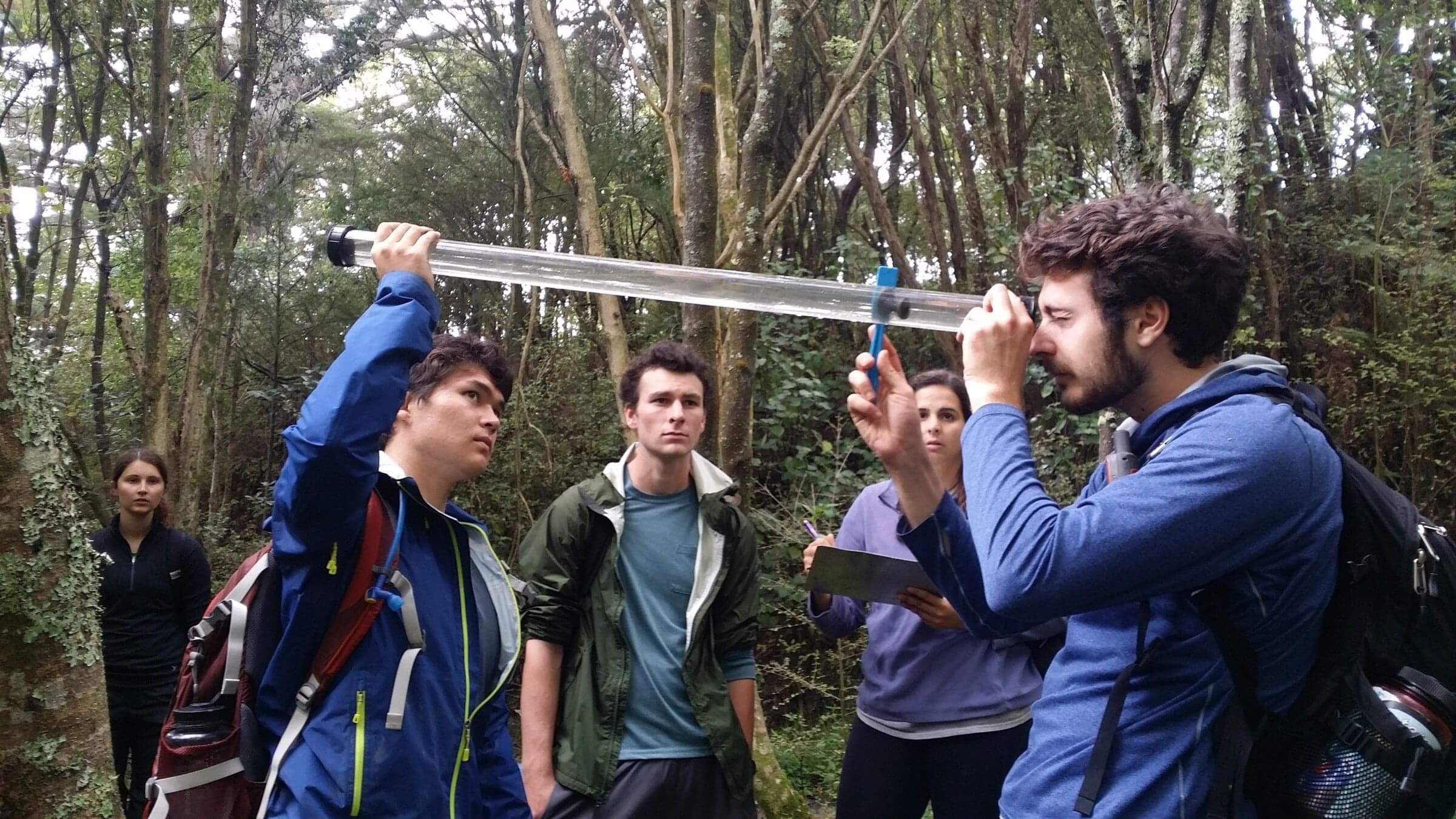
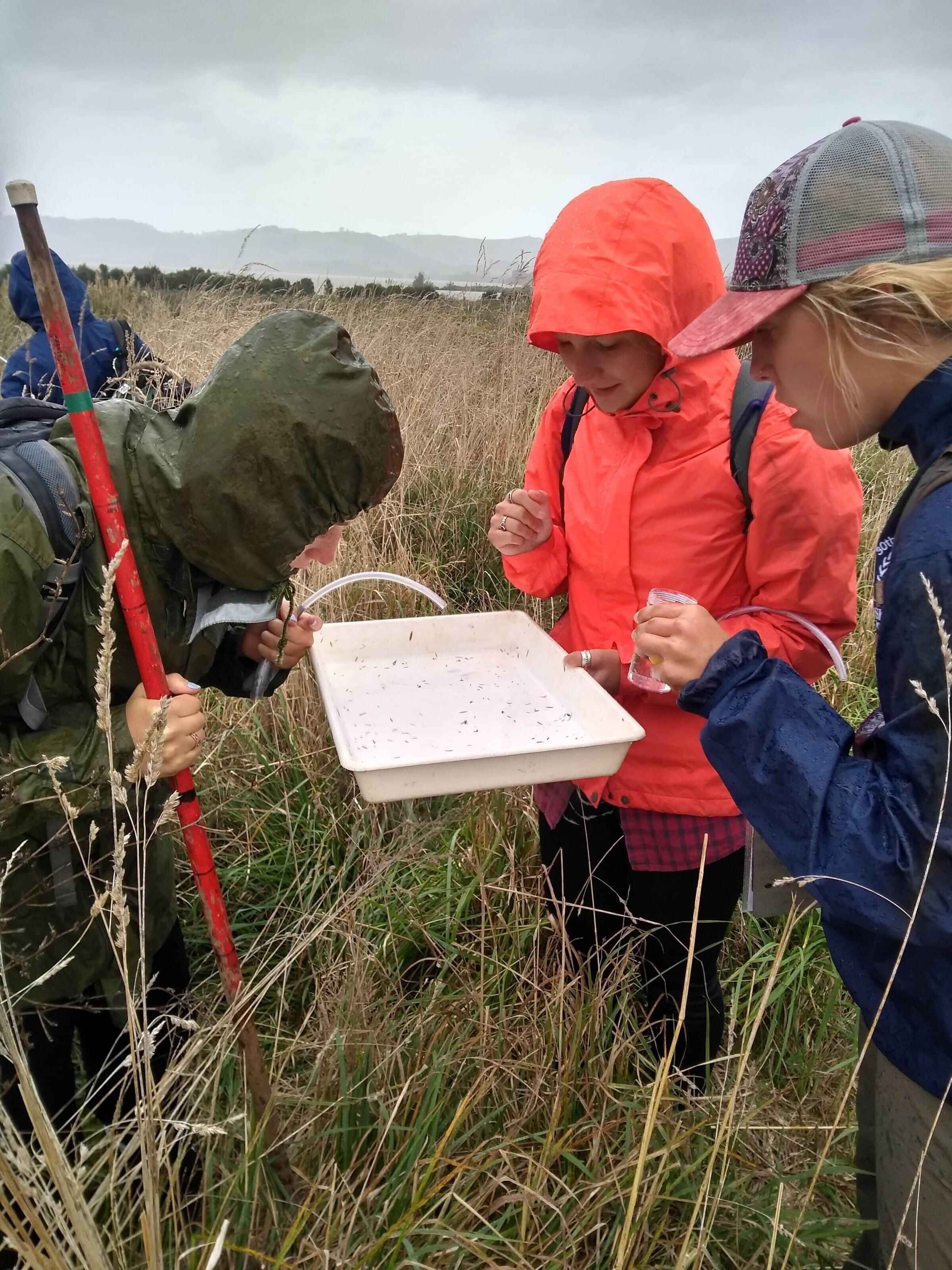
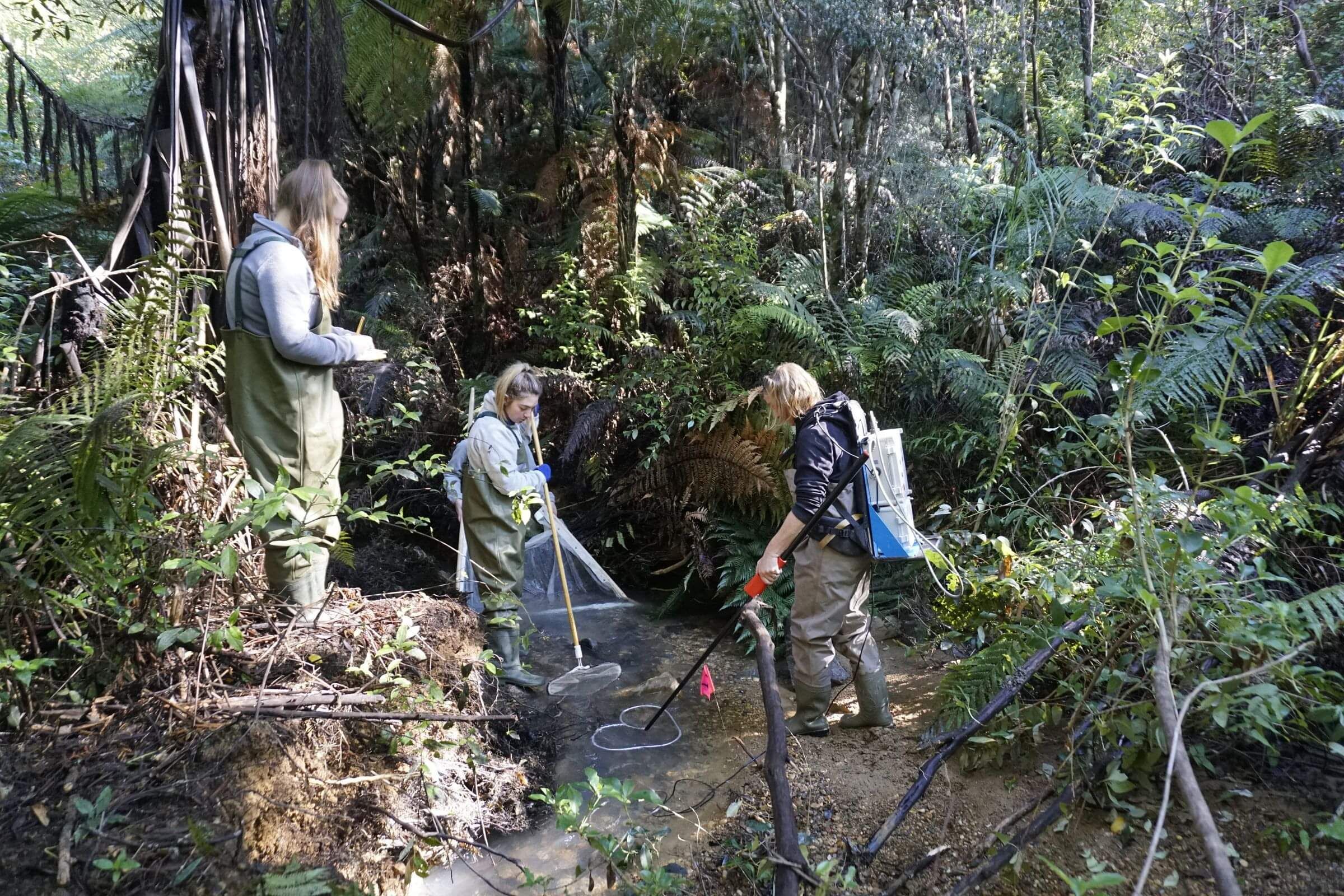

Fish Community Assessment Following Fish-Passage Enhancement of culverts in the Southern Hūnua Ranges
New Zealand native freshwater fish are an important part of our evolutionary history, cultural heritage and ecosystem function, yet many go unnoticed because they are small, cryptic and many are nocturnal. A high proportion of our native freshwater fish are diadromous (migrate between salt and fresh waters). Human activity, such as the building of roads and dams, impacts the migration activity of our native fish. Changes in the landscape disrupts riverscape connectivity, preventing passage of migrating fish. In 2016 in the Wairoa, Mangatawhiri and Mangatangi catchments, Southern Hūnua Ranges, Auckland Council installed structures in 18 road culverts to aid the passage of migrating fish. Prior to these installations EcoQuest conducted a survey documenting the diversity and relative abundance of freshwater fish above and below road culvert barriers. We continue the fish surveys on a five-yearly basis in order to establish the effectiveness of the fish passage devices.
Coastal & Islands
Coastal Bird Surveys for Project Parore
EcoQuest can cater to your surveying needs. We have been working with Project Parore to design an effective monitoring plan encompassing seven catchments. Project Parore brings together the seven catchments that drain into the Northern Tauranga Harbour. The project aims to restore the land, waterways, and harbour habitats. Long term coastal bird surveys were chosen to monitor the response to environmental management. We designed and implemented an effective surveying system. From tandem kayaks we documented species presence and abundance along costal transects. This method enabled over 30km of coast to be surveyed in five days, covering the region contributing to Project Parore. In addition, we placed acoustic recorders at selected sites to record bird calls. Enabling birds that are wary of human presence to be recorded. This survey will be repeated long-term. We expect that as riparian planting matures, and wetlands are restored, the abundance and distribution of coastal bird species will reflect this change.
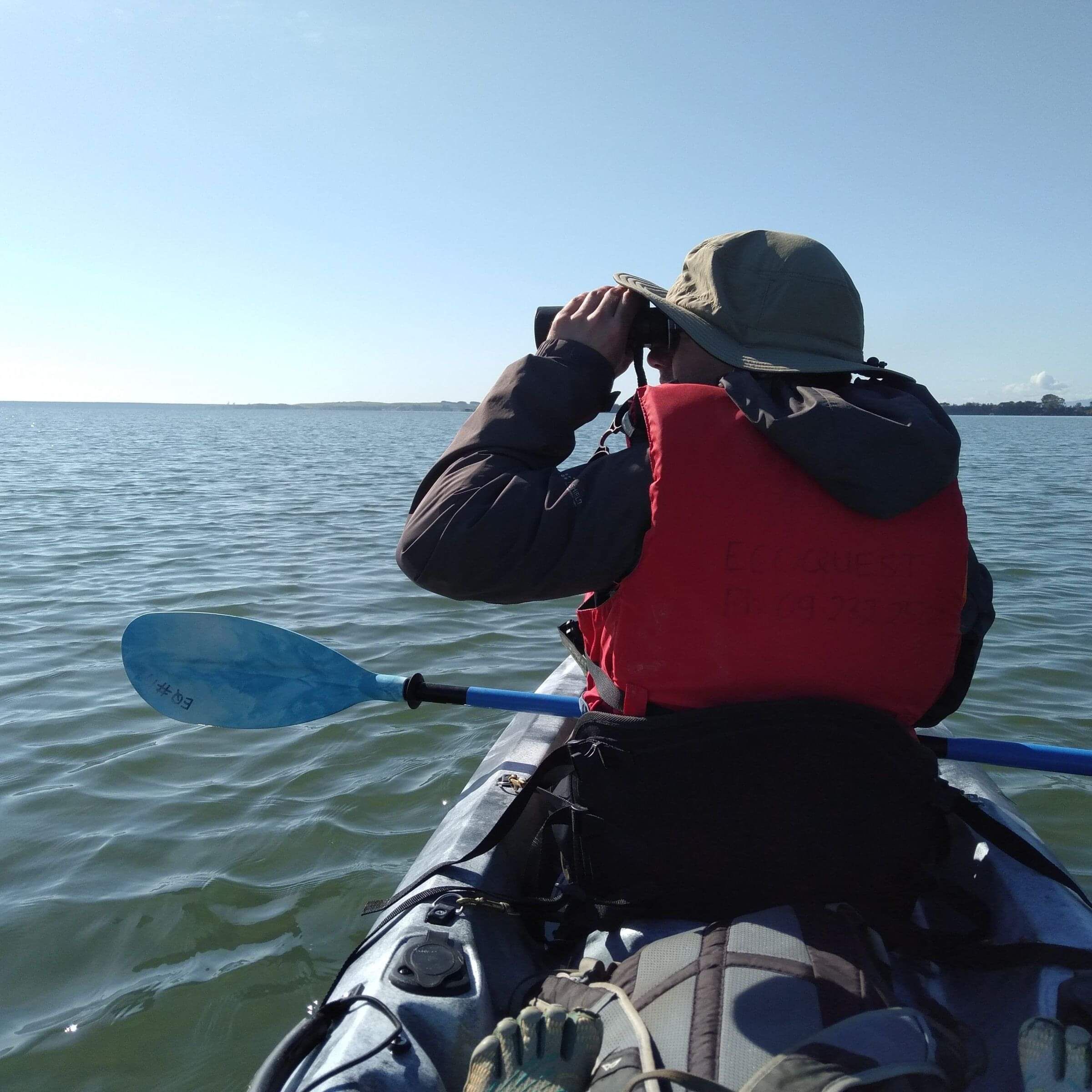
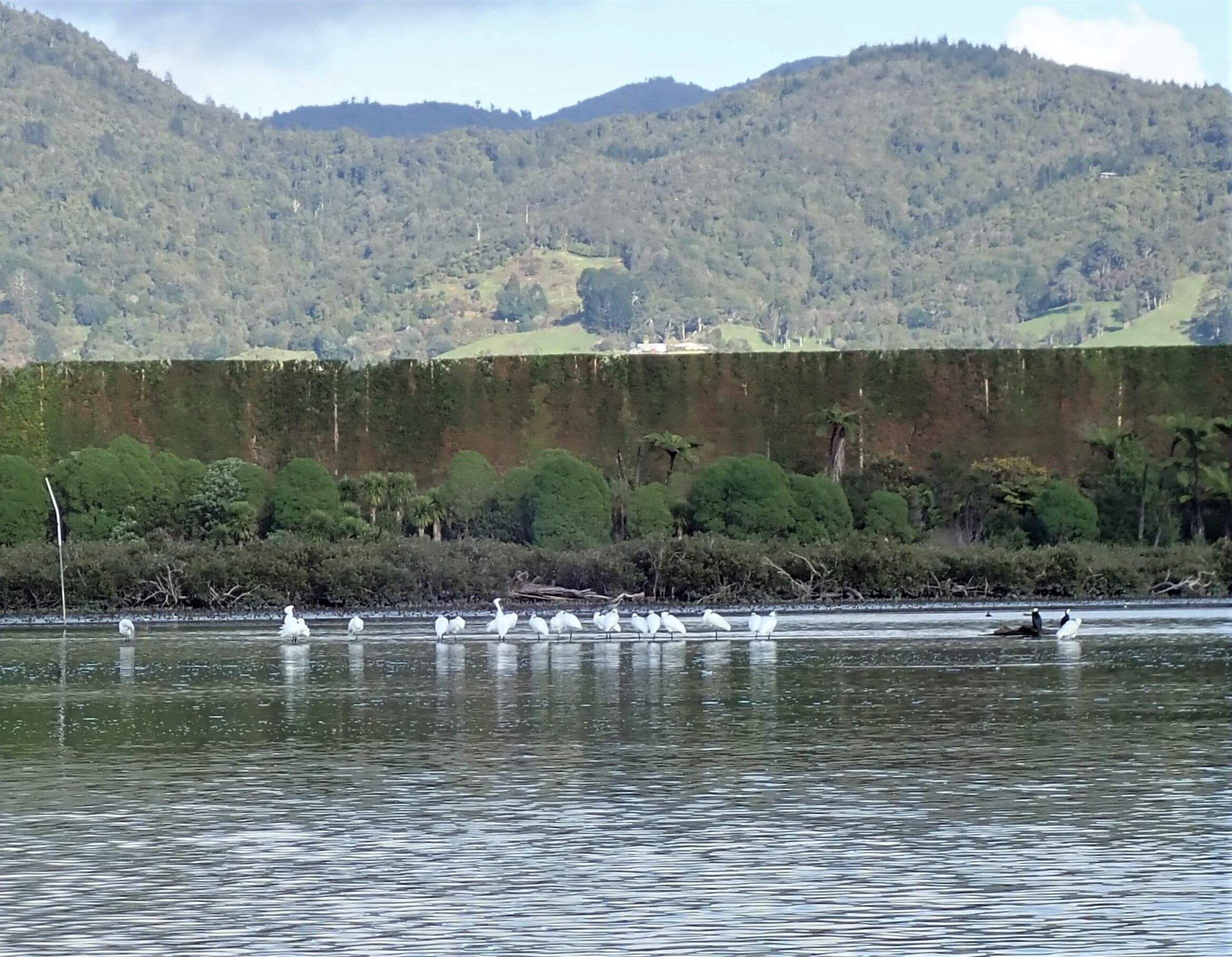
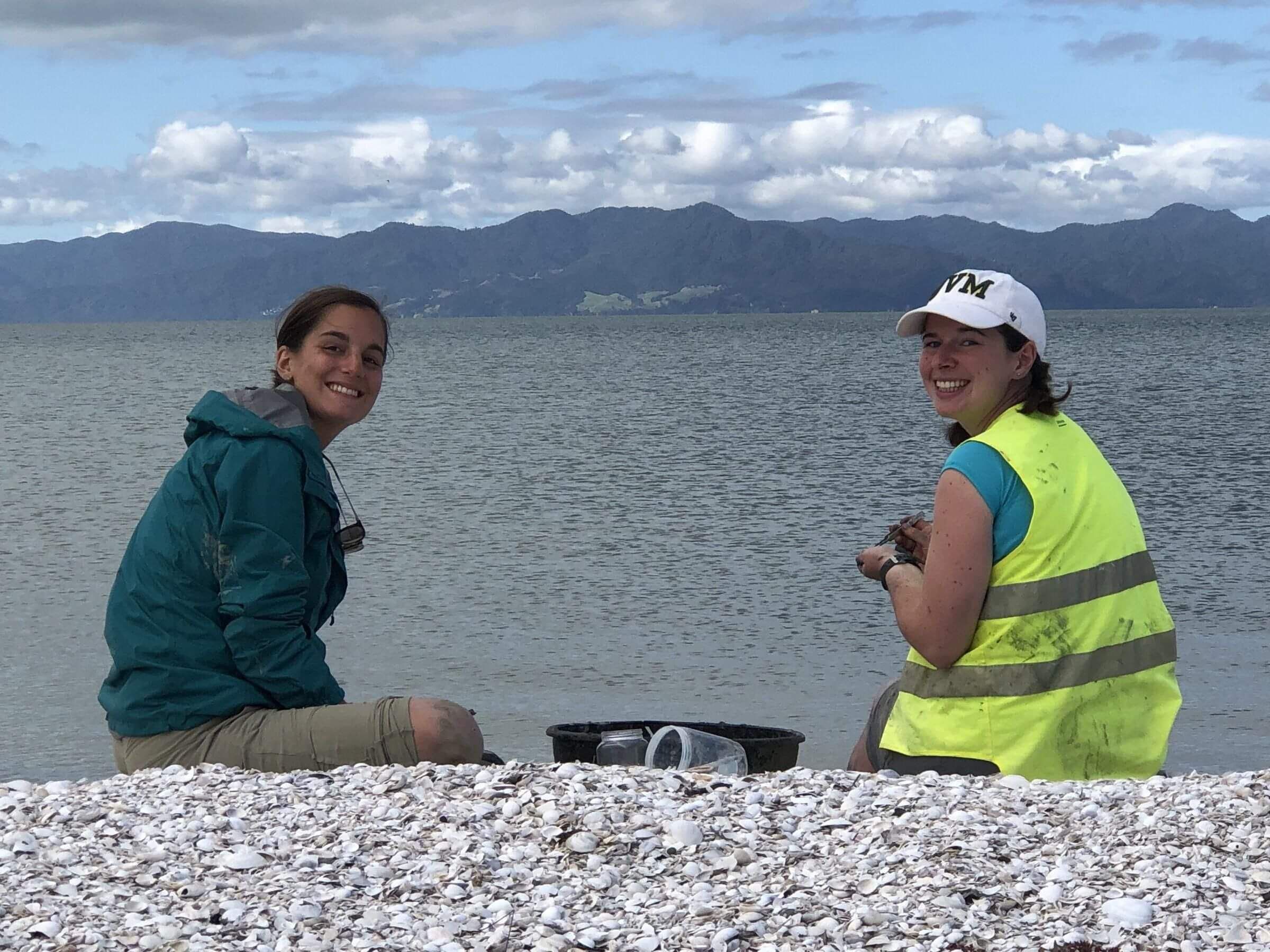

Long-term dynamics of the Pūkorokoro wetland in response to climate change
Coastal wetlands are ground zero for the effects of climate change. They exist in a narrow band of physical and ecological factors that can be radically altered by small changes in sea level, precipitation, temperature, or storm frequency. The Pūkorokoro wetland, located near EcoQuest’s field centre on the Kaiaua coast, is one of the only active chenier plain systems in the world. It also one of the last remnants of the extensive and ecologically significant coastal wetlands that once surrounded much of the Firth of Thames. In January 2018 a major coastal inunudation (driven by a combined spring tide, storm surge, and strong onshore winds) inundated this wetland and much of the surrounding Kaiaua coast with seawater. Events such as these are predicted to become more common over the next century, and the response of the wetland ecosystem to this single event can help us understand how it will response to the pressures of climate change in the future.
In April 2018, EcoQuest established permanent transects in the wetland and carried out ecological and hydrographic surveys that record the state of the wetland in the aftermath of the inundation. These surveys were repeated in 2019, and together they form a dataset that both shows the process of recovery from a single inundation event, and forms a baseline for future surveys.
Hauraki Gulf Shellfish Monitoring Project
Each year EcoQuest take part in the Hauraki Gulf Forum Community Shellfish Monitoring Programme. This is an initiative designed to better understand changes that occur to the inter-tidal environment by monitoring the population and size of shellfish that it sustains. The programme is part of the Hauraki Gulf Forum, a statutory body that employs an integrated management approach with the objective of enhancing and protecting biodiversity within the Hauraki Gulf Marine Park. It is a collective effort that involves community groups, schools and iwi, who all carry out the same survey each year but at different inter-tidal locations accross the region. EcoQuest students have been involved since the beginning of the programme and have to date contributed 11 years of data towards the monitoring programme. Building and examining a long term dataset is crucial in learning about the dynamics of the coastal environment and how human activities can affect natural processes over time.
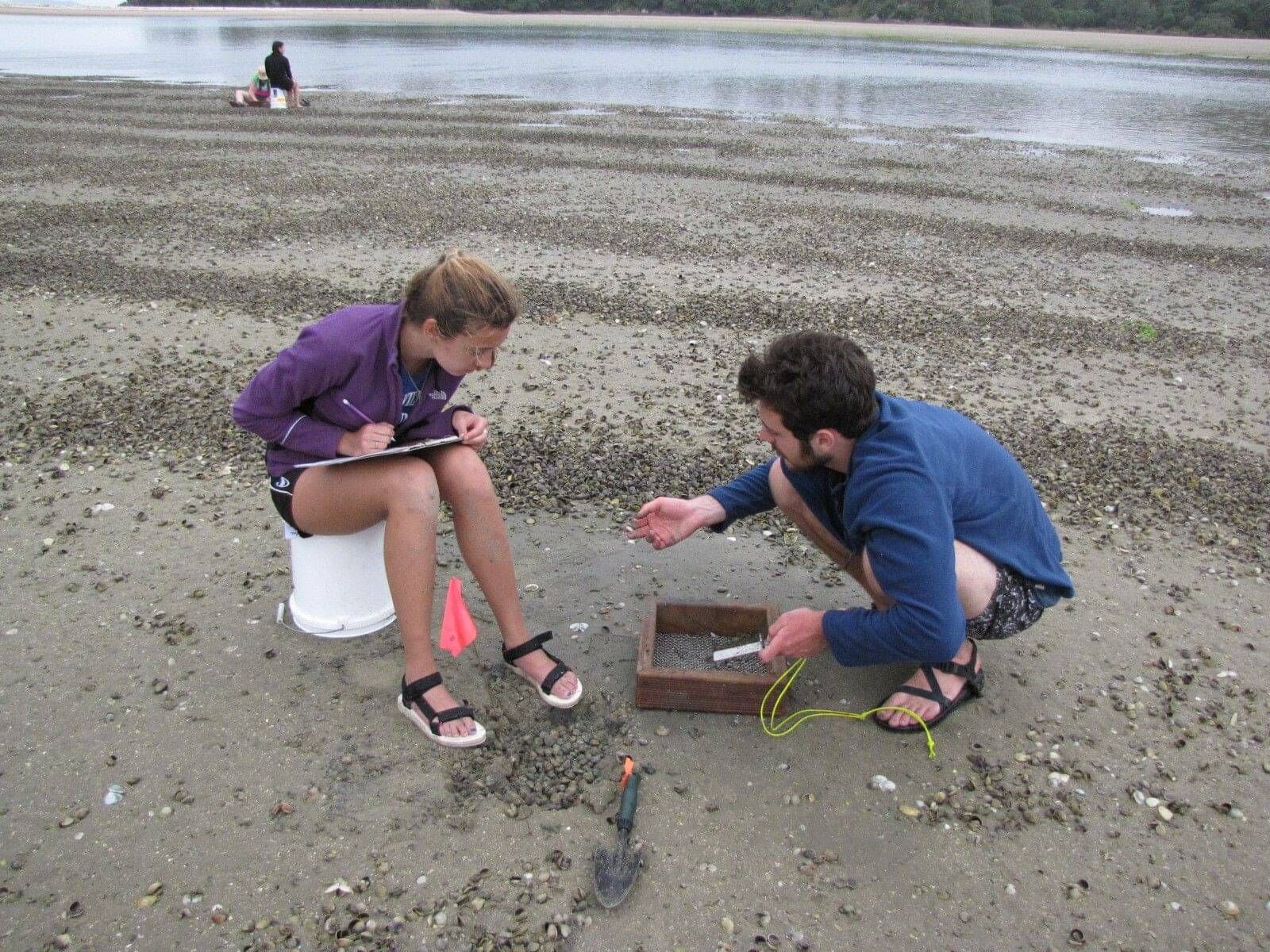
Biodiversity on Private Land
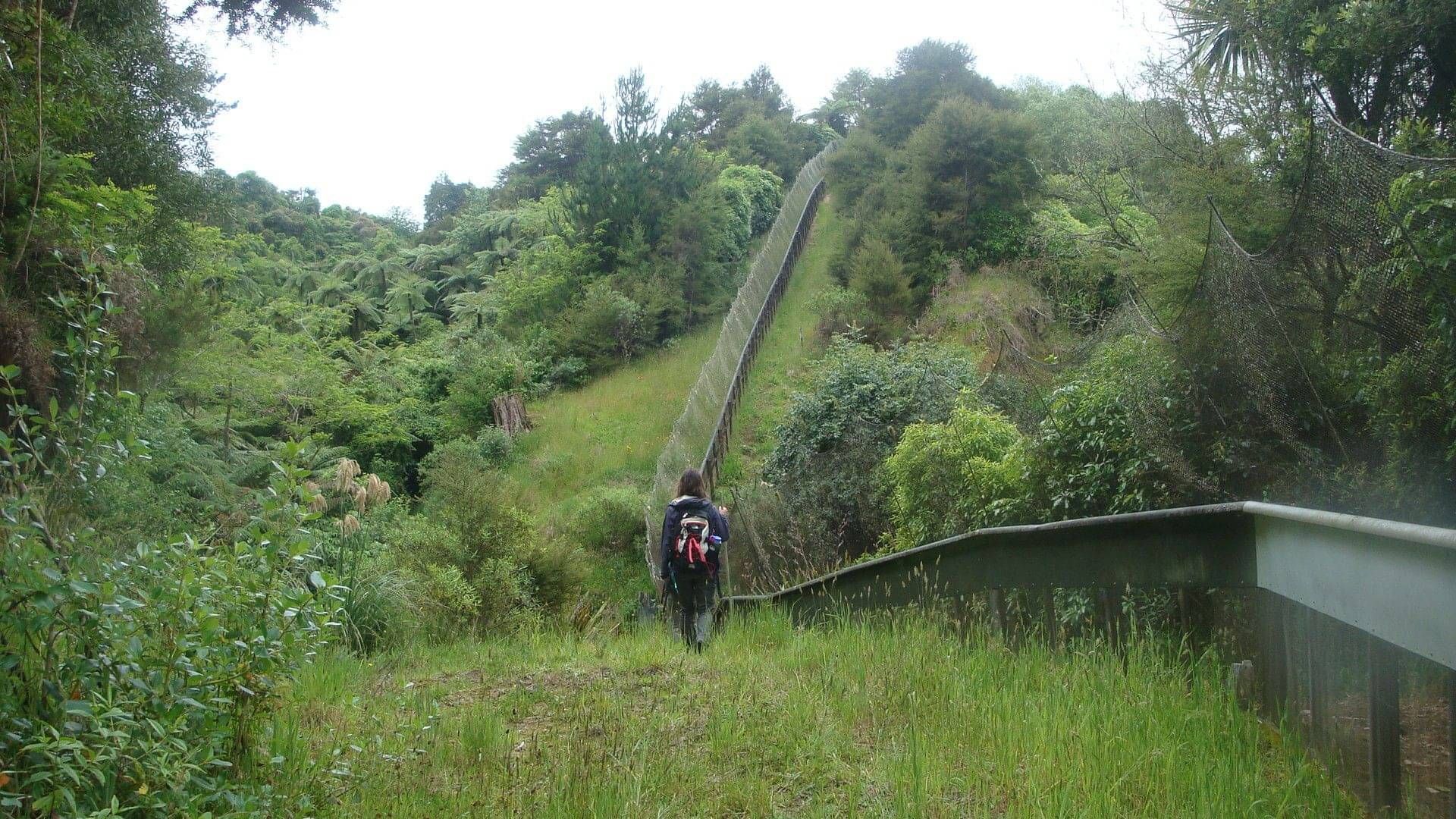

The Warrenheip Native Forest: ecological research in a forest eradicated of mammalian pests.
The Warrenheip Native Forest is a 16-hectare block of regenerating forest that nurtures native fauna by excluding mammalian pests with the surrounding Xcluder™ Pest Proof fence.
The Warrenheip Native Forest was fostered by former teacher Juliette Wallace and farmer David Wallace in their own substantial backyard. The Warrenheip Native Forest is an ecological success that exemplifies the commitment involved in keeping an area free of mammalian pests.
EcoQuest has been working alongside Juliette and David contributing to the Warrenheip Forest Project since 1999. EcoQuest’s research at the Warrenheip Native Forest focuses on ecosystem response to mammalian pest eradication.
The four major projects EcoQuest has conducted at Warrenheip are: Monitoring wētā as indicator species; measuring native flora growth, regeneration, and dispersal; measuring the growth of native trees planted for sustainable timber; and comparing water quality of the Mangahanene stream across reaches within and beyond the Warrenheip Native Forest.
Monitoring wētā species population change following predator eradication at Warrenheip Native Forest, Waikato
Four types of wētā have greatly benefitted from the Warrenheip forest project. Cave, tree and ground wētā had a small population presence in the Warrenheip Native Forest when the Xcluder™ Pest Proof fence was first installed. The endangered Mahoenui giant wētā was translocated to the Warrenheip Native Forest in 2001. Periodically since 2001, EcoQuest has conducted rapid biodiversity assessment of the four wētā types both within and outside the Warrenheip Native Forest. Since pest eradication the abundance of cave, tree and ground wētā has steadily grown both inside and outside the reserve, although abundance and population increase is greater within the fenced forest for all wētā types. The Mahoenui giant wētā have flourished within the Warrenheip Native Forest to the extent that they now escape the fenced area.
